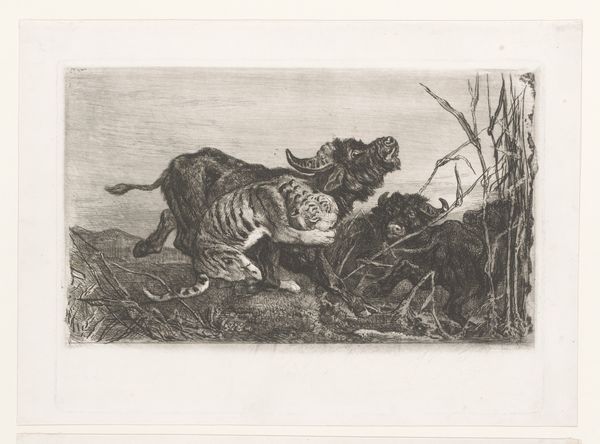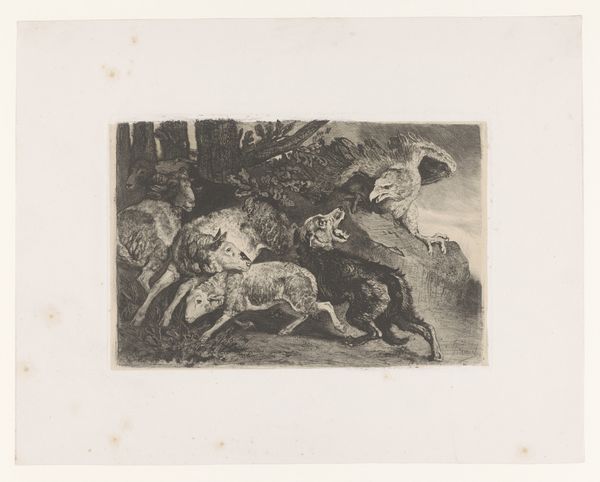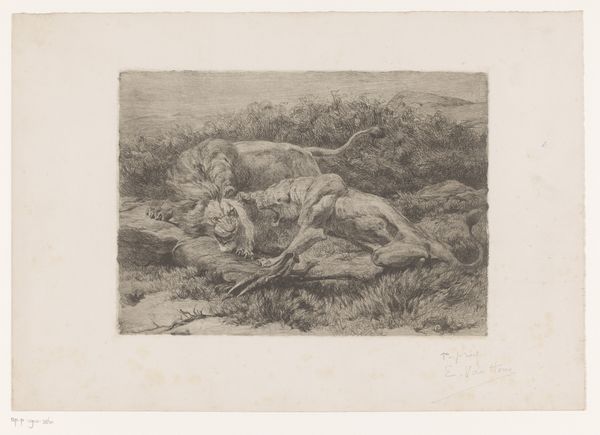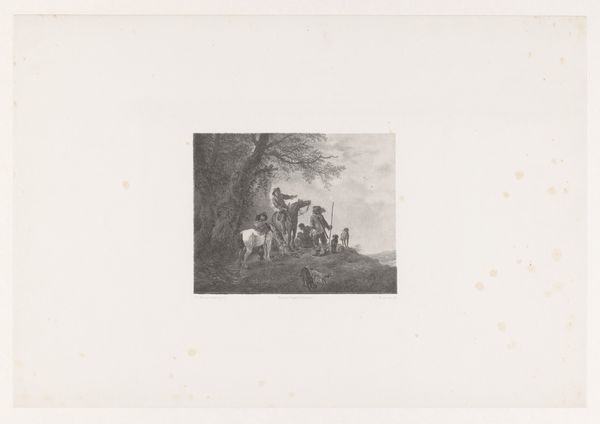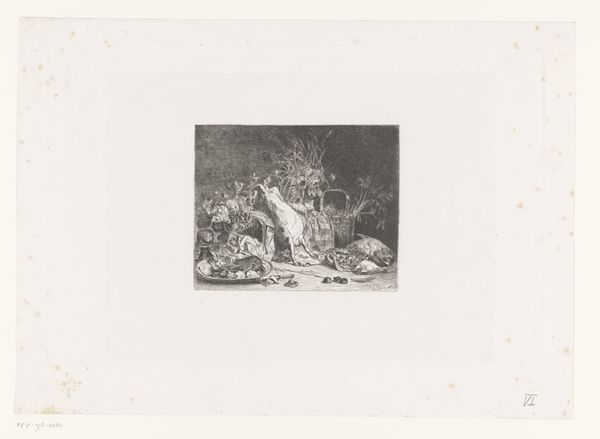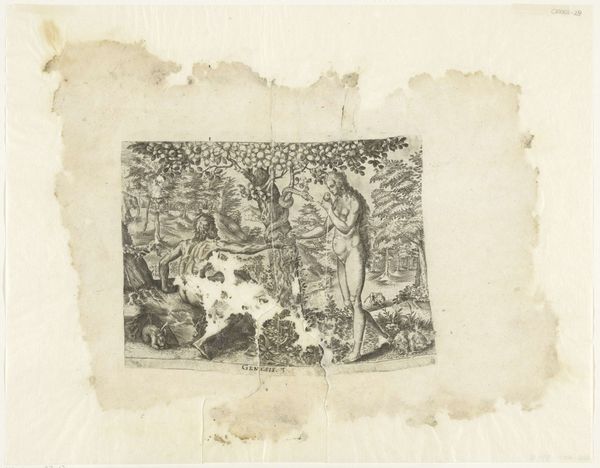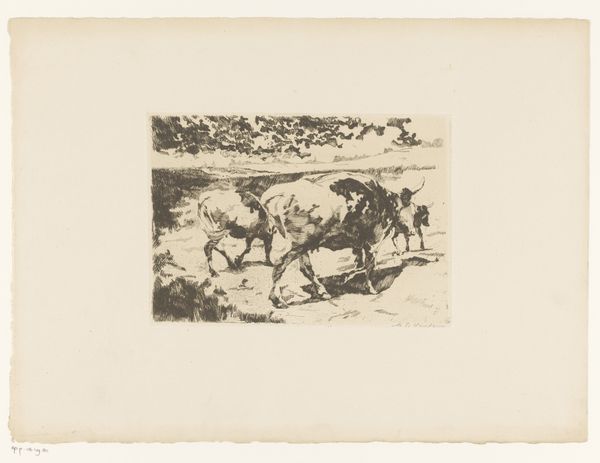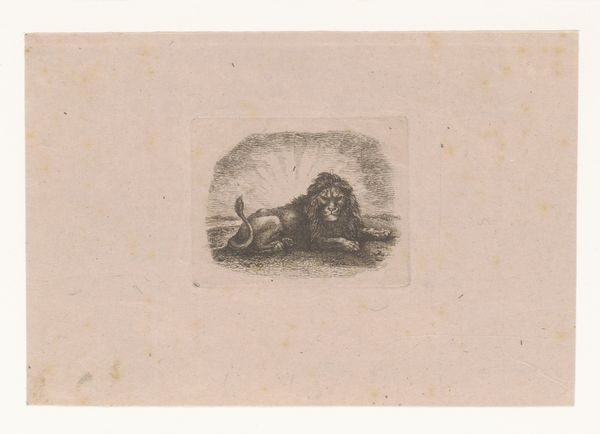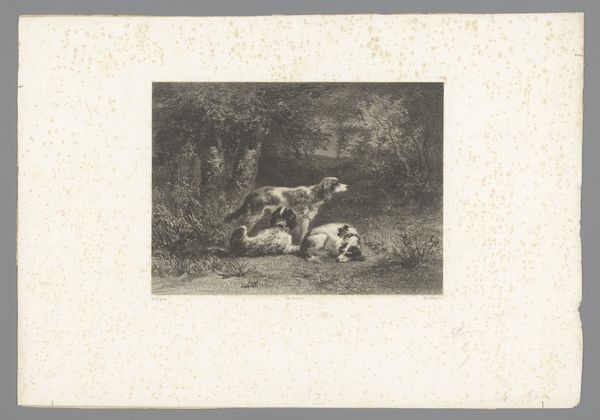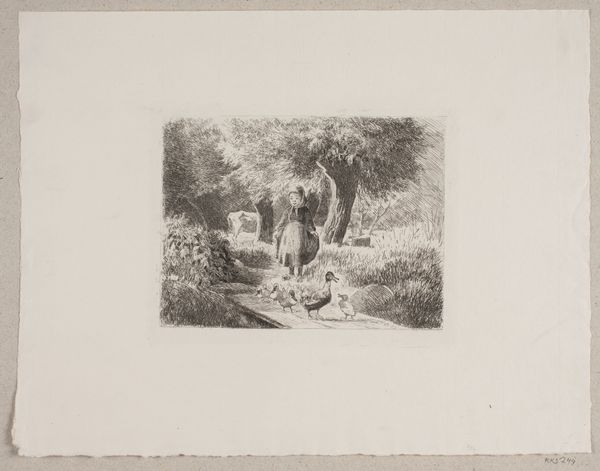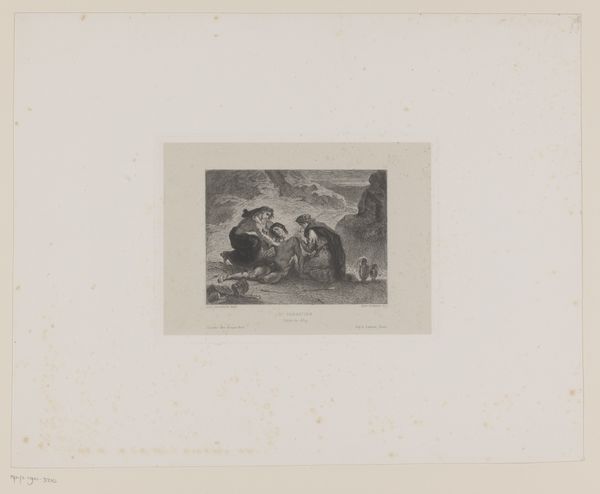
print, etching
#
animal
# print
#
etching
#
landscape
#
realism
Dimensions: height 218 mm, width 298 mm
Copyright: Rijks Museum: Open Domain
Charles Verlat created this evocative image of a tiger attacking buffalos using etching, a printmaking technique, during the 19th century. The process of etching involves covering a metal plate with a waxy, acid-resistant layer. The artist then scratches an image into this layer, exposing the metal beneath. When the plate is submerged in acid, the exposed lines are eaten away, creating grooves. Ink is then applied to the plate, filling these grooves, and the surface is wiped clean. Finally, the plate is pressed onto paper, transferring the inked image. The stark contrast between the dark, bitten lines and the white paper lends a dramatic quality to the scene, amplifying the violence of the tiger's assault. The linear quality of the etched lines gives the image a sense of raw energy, capturing the primal struggle for survival. Verlat's choice of etching, with its capacity for detailed linework and tonal variation, allowed him to create a powerful narrative, while inviting us to consider the labor and skill embedded in the printmaking process itself.
Comments
No comments
Be the first to comment and join the conversation on the ultimate creative platform.
